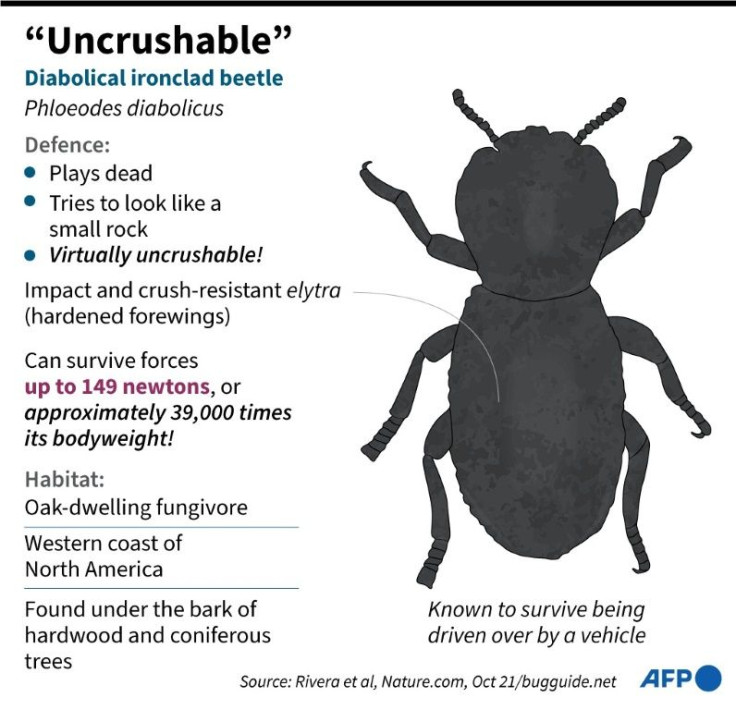What Are Diabolical Ironclad Beetles? Scientist Discover Secret Behind ‘Crush-Resistant’ Bugs
Although cockroaches are known for being able to survive just about anything, a new study found that the diabolical ironclad beetle is essentially “crush-resistant” when an extreme amount of pressure is put on it, like a car.
A study published on Wednesday in the journal Nature found that the beetle’s exoskeleton has made the insect indestructible. Although the diabolical ironclad beetle’s elytra, exoskeleton forewings, makes it unable to fly away from predators, it acts as durable armor that makes the bug “extremely impact-resistant and crush resistant.”
“The ironclad is a terrestrial beetle, so it’s not lightweight and fast but built more like a little tank,” David Kisailus, the principal investigator, said in a statement.
“It can’t fly away, so it just stays put and lets its specially designed armor take the abuse until the predator gives up.”
When attacked, Kisailus revealed the exoskeleton won’t instantly break down, instead the tough exterior deteriorates over time.
“When you break a puzzle piece, you expect it to separate at the neck, the thinnest part,” he said.
“But we don’t see that sort of catastrophic split with this species of beetle. Instead, it delaminates, providing for a more graceful failure of the structure.”
After examining the elytra, researchers learned that the forewings are made up of a protein matrix and layers of chitin, fibrous material that contributes to the formation of the exoskeleton.
Researchers learned the exoskeleton found on a diabolical ironclad beetle contains around 10% more protein by weight compared to the average beetle.
Overall, the study revealed evolution is responsible for the resilience of the diabolical ironclad beetle, which is native to the Southwestern U.S.
“For millions of years, environmental pressures and predator-prey relationships have driven arthropods to develop structures that are both mechanically robust and multifunctional,” the study states.
“With over 350,000 species of flying, terrestrial and aquatic variants, beetle cuticles exemplify these traits by providing structural support, water collection, and retention, and serve as a defense mechanism against predators.”

© Copyright IBTimes 2025. All rights reserved.






















